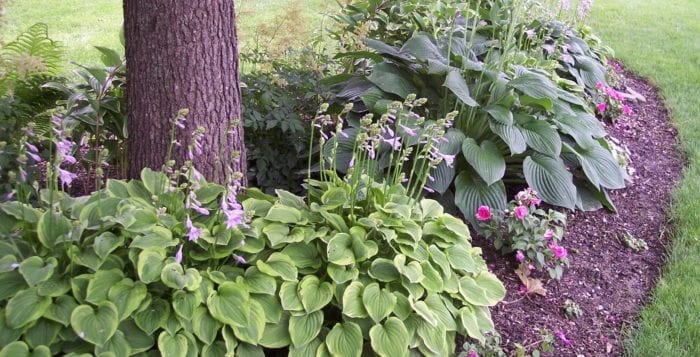Autumn is the ideal time to refresh your lawn

By Ellen Barcel
Many aspects of gardening that we on Long Island take for granted are actually imports. We take honeybees for granted, but in actuality they were imported from Europe. The honey that we routinely enjoy and the pollination benefits they provide for gardeners and farmers are a result of this import. The earthworms that gardeners love to see, creating fertile aerated soil, are also imports, again courtesy of the early Colonists.
Our lush green lawns are another thing we take for granted. Yet before Colonial times, the native peoples had no use for lawns. Natural grasslands, like the prairies of the Great Plains and many other parts of the U.S., supported the buffalo and other grazing animals. Where native peoples farmed, they removed the vegetation and planted, in particular, corn, beans and squash, referred to as the Three Sisters.
So, where did our lawns come from? It’s a long story, but in a nut shell, European grasses were imported into North America, but initially only the rich could afford their maintenance, both here and in Europe. Grasses were trimmed by humans with scythes or by animals grazing on the property.
Interestingly, goats are currently being used in New York State to help eliminate invasive plants in the same way that grazing animals kept grasses trimmed before the lawn mower. They are currently being used on the Underhill Preserve near Jericho Turnpike and Route 106 to clear the land of invasive plants. A particular benefit is that they eat the roots, so that these invasive plants are wiped out. Plans are to remove the goats in mid-October. Hopefully native plants will fill in.
During World War I, a flock of sheep was kept on the White House lawn. It saved manpower and the wool was sold to raise money for the Red Cross. But, no, I’m not suggesting that we as homeowners should keep animals grazing on our lawns. For one thing, in most cases zoning laws prevent it. For another, caring for these animals is work.
In 1830, the mechanical lawn mower was invented, and beginning in the 1870s lawns began to appear, but it wasn’t until the 1930s that front lawns proliferated. They are a product of suburbia. Look at cities and you’ll see very few, if any, in the way of front lawns, even in areas where single- or double-family houses are located. Where suburbs developed in areas of frequent drought, even to this day, there are fewer lawns.
Remember that unless you live in a community with strict landscaping regulations, you don’t even need to have a front lawn. You could plant a variety of ornamentals and ground covers together with statuary. Using native plants, in particular, means less concern with watering and, of course, less mowing. A gardening acquaintance of mine had two acres of manicured lawns. He complained bitterly of the amount of time he spent mowing each weekend. He could have planted more trees and shrubs, removing much of the lawn, just keeping enough in the front of the house for appearance and enough in the back for relaxation.
Next week, we’ll take a look at fall lawn maintenance for those who enjoy their lawns.
Ellen Barcel is a freelance writer and master gardener. To reach Cornell Cooperative Extension and its Master Gardener program, call 631-727-7850.






